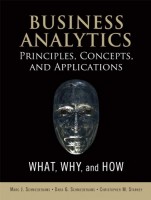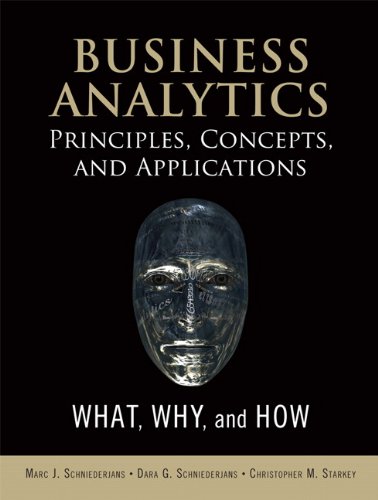 Authors: Mark I. Schneiderjans, Dara G. Schneiderjans, and Christopher M. Starkey
Authors: Mark I. Schneiderjans, Dara G. Schneiderjans, and Christopher M. Starkey
Publisher: Pearson – 350 pages
Book Review by: Sonu Chandiram
The goal of any business is to make money. That is a given. Every business owner aims for a large after-tax net profit. Some of them want to achieve that large net profit objective through larger revenues, while others do not care much for large revenues (which may require larger investments of money, people, time, and effort) but simply want the largest net profit they can achieve in a reasonable amount of time.
Knowing and thoroughly understanding the financials of your business is one of the three keys to having a successful business. Investing and managing your money properly is perhaps even more important than the other two keys to success: investing your time and managing it correctly in your business, and investing in and managing your people correctly. Money, time, and people: these are the three top elements in building and running a business successfully.
There are other elements too, to consider. Three others are: experience, effort and expertise. But these elements can be acquired over time or purchased with money.
What has all this got to do with business analytics, the subjects of this book? Everything. Knowing and thoroughly understanding the numbers in your business, no matter how large or small, are essential to making your business succeed in today’s highly competitive world.
The authors put it very succinctly on why business analytics is not just important, but crucial to success: “Business analytics can help your sort through massive amounts of data, identify meaningful patterns, transform patterns into insights, and use those insights to make more profitable decisions.”
This book informs you thoroughly what business analytics is, and why it is so important as a tool to running your business to achieve your end result: a large after-tax net profit. This is not a multi-volume work that is difficult to read, comprehend, and apply what you learn.
It is a fairly easy read, with data that illustrates what happens if some numbers change. The book is simply organized into four parts with just eight chapters, and simple questions as shown below. So read the book to get your answers, and start making money!
- What Are Business Analytics
- What Are Business Analytics?
- Why Are Business Analytics Important
- Why Are Business Analytics Important?
- What Resource Considerations Are Important To Support Business Analytics?
- How Can Business Analytics Be Applied
- How Do We Align Resources to Support Business Analytics Within An Organization?
- What Are Descriptive Analytics?
- What Are Predictable Analytics?
- What Are Prescriptive Analytics?
- A Final Business Analytics Case Problem
- Appendix
- Statistical Tools
- Linear Programming
- Duality and Sensitivity Analysis in Linear Programming
- Integer Programming
- Forecasting
- Simulation
- Decision Theory
Authors:
Mark I. Schneiderjans is C. Wheaton Battey Distinguished Professor of Business in the College of Business Administration at the University of Nebraska–Lincoln, and has served on the faculty of three other universities. He is currently President of the Decision Sciences Institute (DSI).
His prior experience includes owning and operating his own truck leasing business. Also a member of ISM and POMS, he has won multiple teaching awards and is an honorary member of the Golden Key Honorary Society and Alpha Kappa Psi business honor society. He has published more than 100 journal articles and has authored or coauthored 20 books on management, including Reinventing the Supply Chain Life Cycle.
Dara G. Schneiderjans is Assistant Professor of Supply Chain Management at the University of Rhode Island, College of Business Administration. She has published in Decision Support Systems, Journal of the Operational Research Society, and Business Process Management Journal. She has also coauthored two textbooks, co-edited a readings book and was guest co-editor for a special issue on Business Ethics in Social Sciences in the International Journal of Society Systems Science. She teaches both Supplier Relationship Management and Operations Management
Christopher M. Starkey, an Economics student at the University of Connecticut – Storrs, has presented papers at the Academy of Management and Production and Operations Management Society meetings. He currently teaches Principles of Microeconomics and has taught Principles of Macroeconomics. His research interests include macroeconomics and monetary policy, and other decision-making methodologies.







